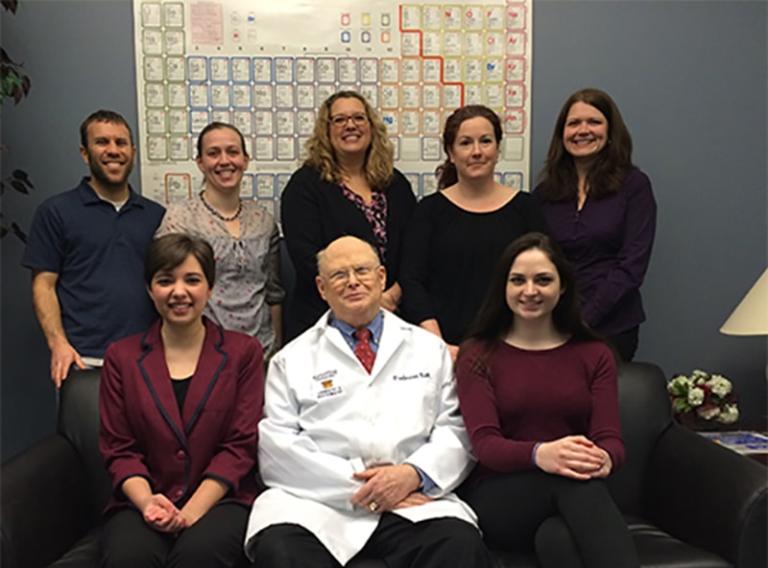
“This is an amazing opportunity for freshman undergraduates to help conduct meaningful research alongside faculty. It is experience that cannot be duplicated in the classroom.”
A Kettering University endowment is not only providing scholarship support for students, it is also creating on-campus co-op opportunities that expose undergraduates to intensive and unique research experiences.
The Bell-Kagle Undergraduate Research Internship program was built from the Bell-Kagle Endowment, a fund created by alumnus Bob Kagle ’78 in honor of G. Reginald Bell, longtime Chemistry professor at Kettering. The research co-op positions funded through the endowment are for freshman students majoring in Applied Biology, Chemistry and Biochemistry. The program not only helps students in those majors find appropriate co-op employment, it also gives faculty added resources to conduct meaningful applied research on campus.
“The inspiration for the program was simply Bob’s generous gift,” Bell said. “He left it to us to utilize it in a way that would benefit students and faculty. This program rewards high achieving students with the opportunity to work closely with faculty and get lab and research experience that is really unprecedented. This is an academic-altering experience for students.”
The first two Bell-Kagle interns, Mia Jonascu and Elyse Hossink, were chosen in 2015. Jonascu is working with Dr. Veronica Moorman, faculty member in Chemistry/Biochemistry, and Dr. James Cohen, faculty member in Applied Biology, on research aimed at identifying and characterizing evolutionary ancestors of the bubonic plague. Hossink is working with Dr. Michelle Ammerman and Dr. Cheryl Samaniego, faculty members in Applied Biology, on research determining medicinal properties of plant extracts.
“Paid undergraduate research opportunities like these are really rare,” said Dr. Stacy Seeley, department head of Chemistry, Biochemistry, Chemical Engineering and Applied Biology at Kettering University. “This is an amazing opportunity for freshman undergraduates to help conduct meaningful research alongside faculty. It is experience that cannot be duplicated in the classroom.”
Students are selected based on a competitive application process that includes reviewing academic performance and interest. Faculty members interested in employing Bell-Kagle students on their projects also submit proposals. A committee of faculty then matches qualified students with relevant research project requests.
The program also encourages interdisciplinary collaboration. Both Jonascu and Hossink are working on projects that include faculty from different academic programs.
“There is an enormous amount of interdisciplinary work on these projects,” Bell said. “That experience and the skills they develop will make these students very desirable to future employers for a number of research or industry projects.”
After launching the program with two participants this year, there is potential to accommodate more Bell-Kagle students in future years.
“This is a very valuable program for both students and faculty,” Seeley said. “Giving underclassmen this type of immersive experience early on has immense benefits for students as they determine their future educational and career paths. It also greatly benefits faculty and the University by enhancing opportunities to complete and publish research. Every year, we hope to be able to offer more Bell-Kagle internships.”